Discover 11 hidden attractions, cool sights, and unusual things to do in Edwardsville (United States). Don't miss out on these must-see attractions: Benjamin Stephenson House, Lovejoy Library, and The Wildey Theatre. Also, be sure to include Narodni Sin in your itinerary.
Below, you can find the list of the most amazing places you should visit in Edwardsville (Illinois).
Table of Contents
Benjamin Stephenson House
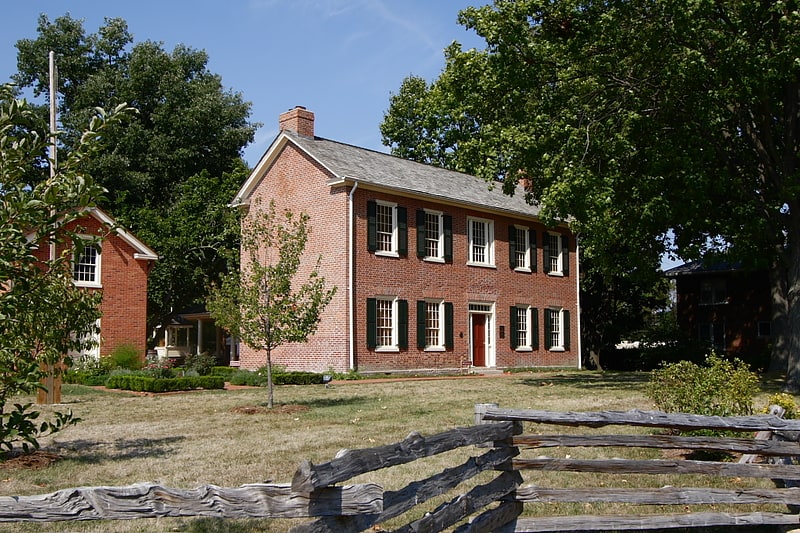
Home in Edwardsville, Illinois. The Benjamin Stephenson House is a Federal style home built in 1820 in the city of Edwardsville, Illinois, United States. The house was constructed by prominent Edwardsville citizen and Illinois politician Benjamin Stephenson. He died shortly after the home's completion and the home had 15 subsequent owners, some of whom made major alterations to the original structure. In 1845 the addition of an ell altered the appearance of the house. The last two owners were the Sigma Phi Epsilon fraternity and the current owner, the city of Edwardsville.
In 1999 the city of Edwardsville purchased the home from the Sigma Phi Epsilon fraternity and in 2001 a restoration project began. The project aimed to restore the house to its authentic 1820s appearance and open the house as a public museum. The house has been the subject of tales of ghostly activity since at least the 1970s, though no recent reports exist. The Stephenson House has prominence for its architecture and for its affiliation with Illinois politics. The building was added to the U.S. National Register of Historic Places in 1980.[1]
Address: 409 S Buchanan St, 62025-2037 Edwardsville
Lovejoy Library
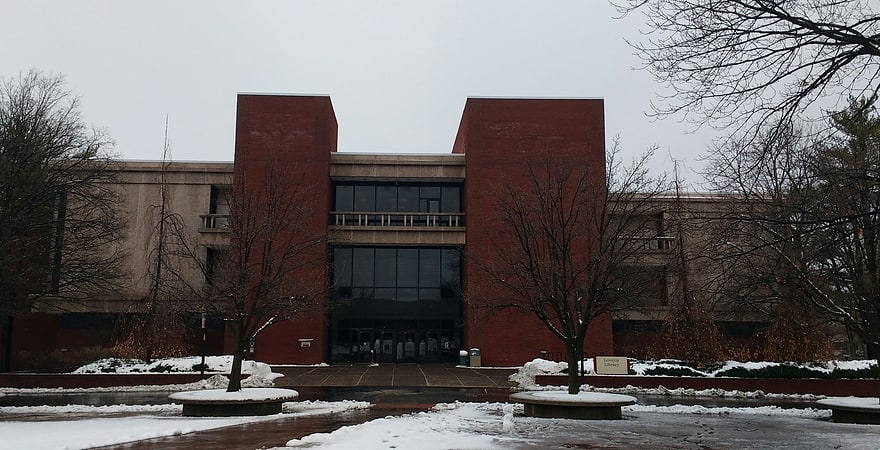
University library in Edwardsville, Illinois. Lovejoy Library at Southern Illinois University Edwardsville opened in 1965 and is located on the Stratton Quadrangle of the SIUE campus. The library was named for Elijah Parish Lovejoy, American Presbyterian minister, journalist and newspaper editor who, in 1837, was murdered by a mob in nearby Alton for his abolitionist views.
Business hours are 7:30 a.m.-1 a.m. Mondays-Thursdays; 7:30 a.m.-9 p.m. Fridays; 10 a.m.-6 p.m. Saturdays and 1 p.m.-1 a.m. Sundays.[2]
Address: 3 Hairpin Dr, 62026 Edwardsville
The Wildey Theatre
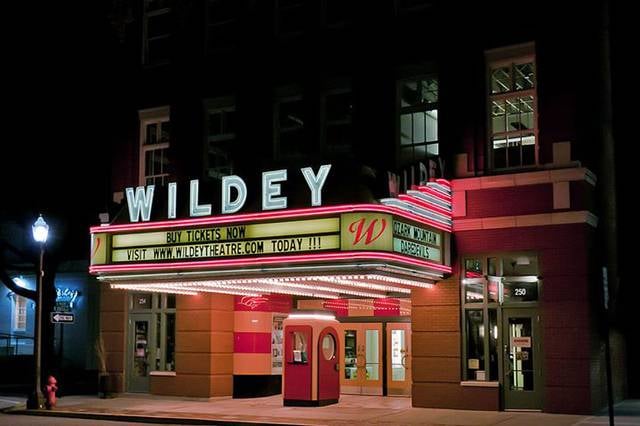
Concerts and shows, Entertainment, Cinema, Performing arts, Theater
Address: 252 N Main St, 62025-1604 Edwardsville
Narodni Sin
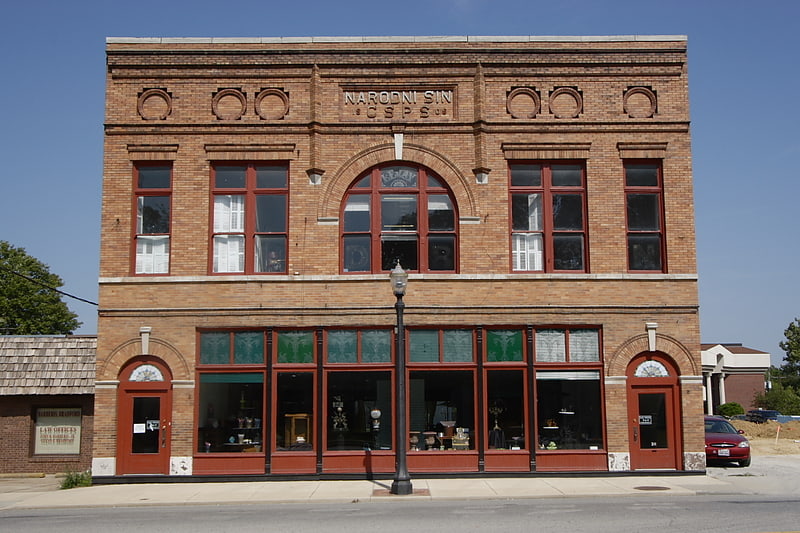
Narodni Sin, also known as the Czech National Hall, is located on 209-211 E. Vandalia, Edwardsville, Illinois. Narodni Sin was built in 1906 using funds provided by the Czechoslovak Protective Society after they outgrew their original meeting hall. The building supported the society's cultural and physical fitness activities. They sold the building in 1971 to the builder's granddaughter who refurbished it and leased it for commercial use.
The building was listed on the National Register of Historic Places in 2002.[3]
Watershed Nature Center
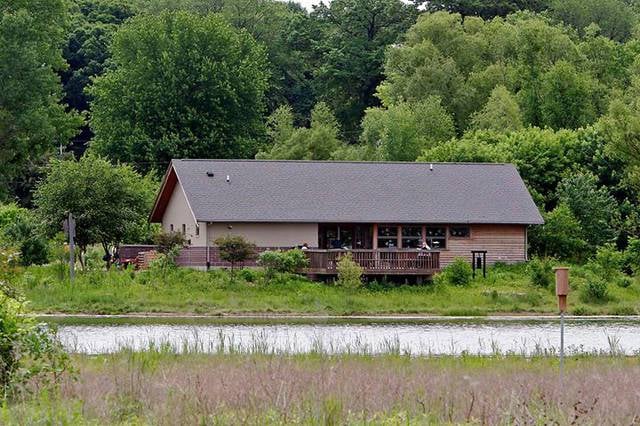
Park, Relax in park
Address: 1591 Tower Ave, 62025-1015 Edwardsville
Edwardsville Chapter House
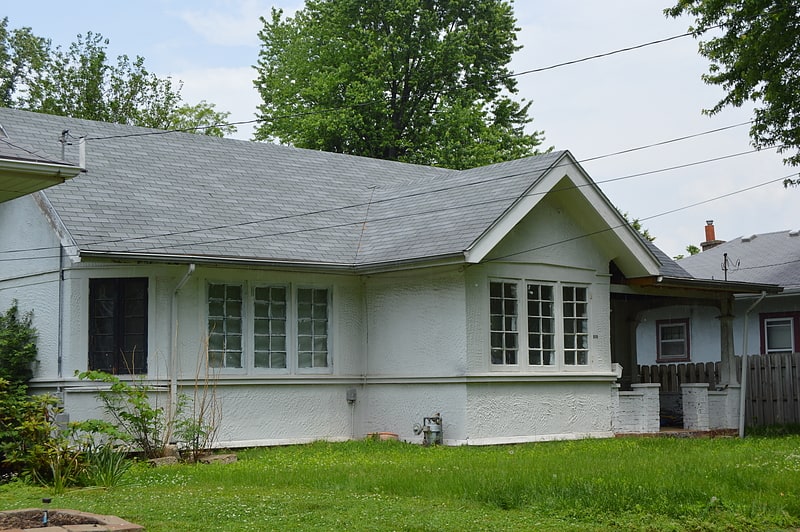
Building in Edwardsville, Illinois. The Edwardsville Chapter House is a historic building located at 515 W. High St. in Edwardsville, Illinois. The building was constructed between 1909 and 1910 as a meetinghouse for Edwardsville's chapter of the American Woman's League. The American Woman's League was a political and social organization founded by magazine publisher Edward Gardner Lewis in 1908. The organization was created to promote feminist causes, particularly the women's suffrage movement; Lewis also intended for the organization to promote and sell his women's magazines. Lewis commissioned the St. Louis architectural firm of Helfensteller, Hirsch & Watson to design five classes of buildings which the League would use as meetinghouses. The Edwardsville Chapter House is an example of a Class II building, which was designed for clubs with 60 to 100 members. The building was designed in the Prairie School style and cost $2,500. After the club disbanded, the building was converted to a private home.
The building was added to the National Register of Historic Places on November 28, 1980. It is one of nine American Woman's League chapter houses on the National Register in Illinois.[4]
John Weir House
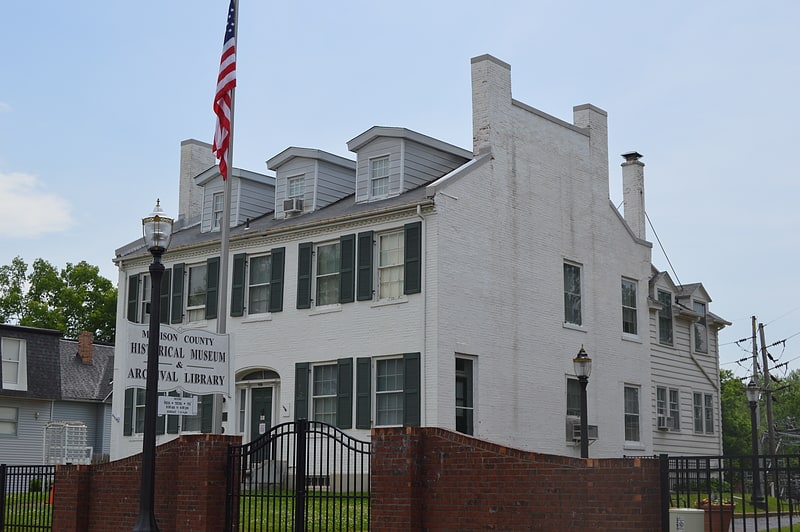
Museum in Alton, Illinois. The John Weir House is a historic house located at 715 N. Main St. in Edwardsville, Illinois. Built in 1836, the house is the second-oldest in Edwardsville after the Benjamin Stephenson House. The two-and-one-half story brick house is designed in the Federal style. The front facade of the house has five bays with a central entrance; the entrance is surrounded by a fan light and an arched lintel. The house's gable roof features three dormers on either side, chimneys at either end, and a brick cornice on the rear edge. Dr. John Weir, the owner of the house, ran his doctor's office in the house with his son Edward until the former's death in 1878. In 1963, the Madison County Historical Society purchased the house and converted it to a museum.
The house was added to the National Register of Historic Places on May 9, 1983.[5]
Berleman House
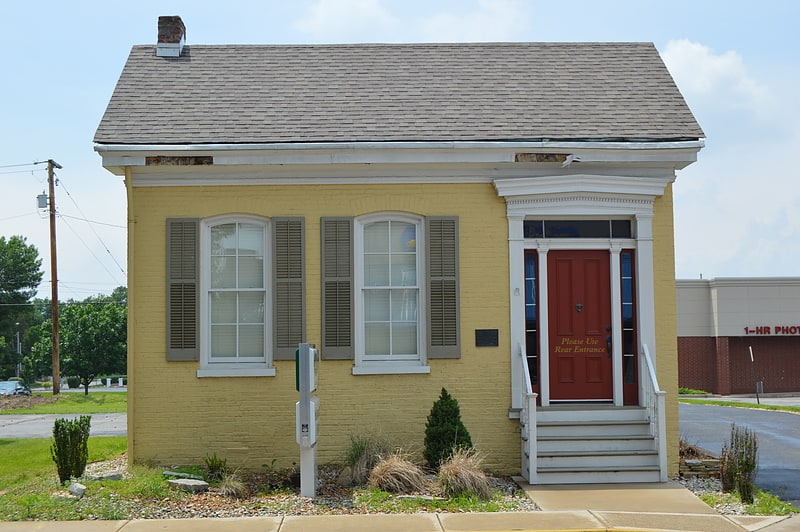
Building in Edwardsville, Illinois. The Berleman House is a historic house located at 115 S. Main St. in Edwardsville, Illinois. The house was built between 1864 and 1868 by Samual Morrison. Architect Charles Spillman designed the house in the Greek Revival style. The house is a one-story brick building topped by a gable roof. The front entrance features a pediment supported by Doric pilasters; smaller pillars flank the recessed door, which has sidelights and a transom. Carpenter Herman Berleman purchased the house in 1868; his family lived in the home until 1962. In 1895, Berleman built a frame addition on the back of the house.
The house was added to the National Register of Historic Places on March 27, 1980.[6]
Madison County Sheriff's House and Jail
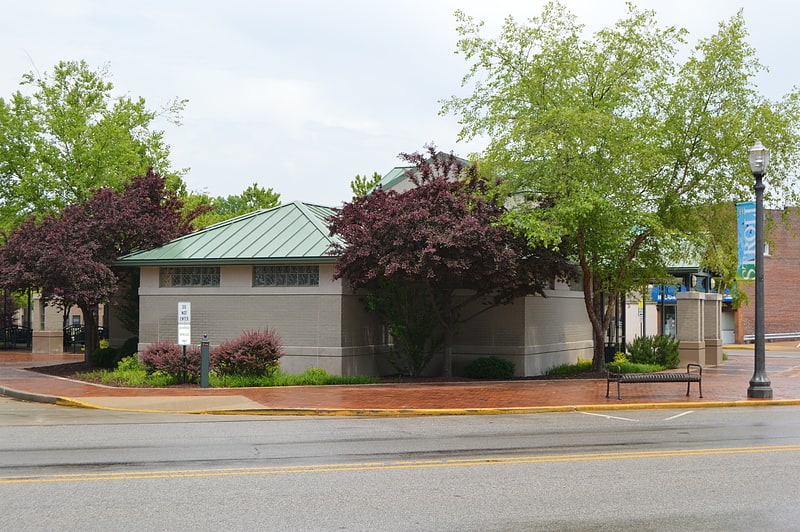
Heritage building in Edwardsville, Illinois. The Madison County Sheriff's House and Jail was a historic house and jail building located at 210 N. Main St. in Edwardsville, Illinois. Built in 1869 and opened in 1871, the building was the oldest Madison County government building in Edwardsville, the county seat. The building consisted of a three-story sheriff's house and an adjacent cell block; the cell block was expanded in 1904 to provide space for female prisoners. The sheriff's house was designed in the Second Empire style; it was one of two examples of the style in Edwardsville and the only one which had maintained its historical appearance. The building's design featured a mansard roof, two dormers on both the front and rear sides, and a bracketed wooden cornice.
The building was added to the National Register of Historic Places on May 31, 1980, and was delisted in 2020.[7]
LeClaire Historic District
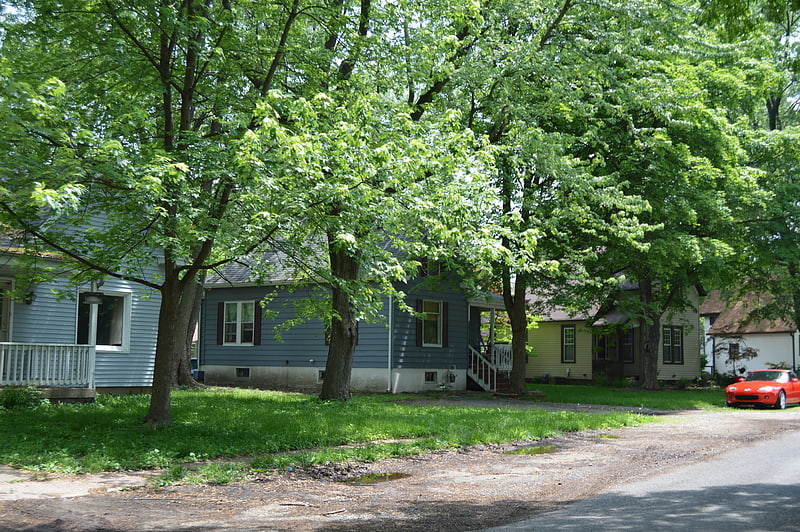
Historical landmark in Edwardsville, Illinois. LeClaire Historic District is a historic district located in Edwardsville, Illinois. The community was added to the National Register of Historic Places on August 8, 1979.
N. O. Nelson, the owner of the Nelson Manufacturing Company, established the town between 1890 and 1895 on donated land. Nelson planned the town to be an intentional community inspired by ideals such as Edward Bellamy's novel Looking Backward and the Ethical Culture movement. The community included an academy which offered free adult education and reading rooms, which was inspired by a self-culture hall in St. Louis.
Nelson also established a profit sharing system in the community. The system was derived from a concept used at the Maison LeClaire in Paris, from which the community took its name.
As LeClaire was an open community, its residents were not all company employees, nor were employees required to live in the community. However, the company provided utilities and public facilities to LeClaire residents. Journalist Nellie Bly compared the community favorably to Pullman in Chicago, and Ida Tarbell also wrote about the community.[8]
St. Louis Street Historic District
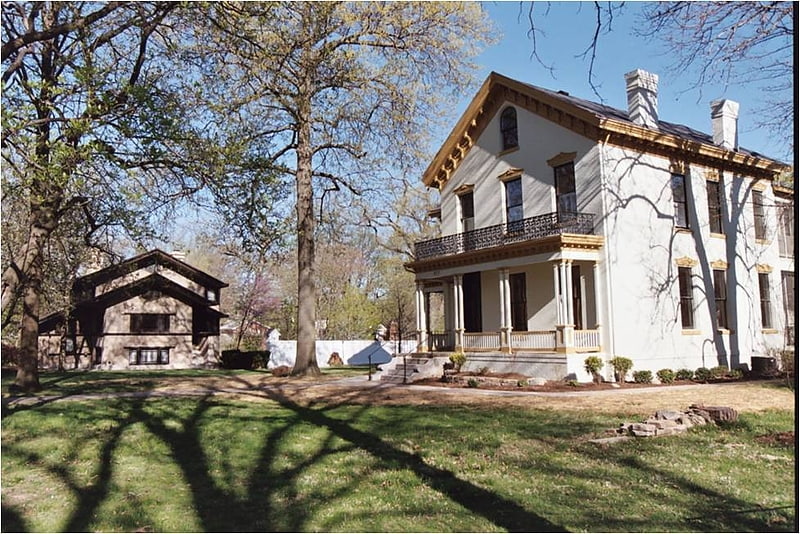
Historical place in Edwardsville, Illinois. The St. Louis Street Historic District is a residential historic district located along several blocks of St. Louis Street in Edwardsville, Illinois. The district includes 59 homes, of which 51 are considered contributing to the district's historic character. St. Louis Street was one of the most prestigious sections of Edwardsville in the late 1800s, and several of the city's wealthiest residents owned homes along the street. The first house on the street, a log cabin, was built by John Lusk in 1809. In the 1870s, prominent residents of Edwardsville began building homes on the south side of St. Louis Street; these houses typically had large plots and open parkland between lots. In 1883, Judge Joseph Gillespie divided and sold the land on the north side of the street; the homes built on these lots are consequently much closer together. The homes built in the district were designed in popular architectural styles of the late 1800s; while the Queen Anne style is the most prevalent, Italianate, Chateauesque, and Classical Revival houses were also built.
The district was added to the National Register of Historic Places on May 9, 1983.[9]